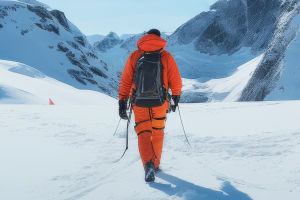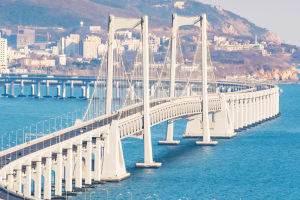Melting icebergs are a stark indicator of climate change, symbolizing the broader environmental changes occurring across our planet.
As global temperatures rise, icebergs and polar ice caps melt at an alarming rate.
This phenomenon not only affects the immediate ecosystems but also has far-reaching consequences for human populations worldwide. Understanding these effects is crucial for formulating effective responses to mitigate the impact.
Rising Sea Levels
One of the most direct consequences of melting icebergs is the rise in sea levels. As icebergs and polar ice sheets melt, the water previously trapped in these massive ice forms is released into the ocean. This increase in ocean volume contributes to higher sea levels, which pose a significant threat to coastal communities around the world.
Many coastal cities, such as Miami, New York, and Tokyo, are at risk of severe flooding due to rising sea levels. This can lead to the displacement of millions of people, loss of property, and significant economic impacts. In some regions, entire communities may need to be relocated, leading to social and logistical challenges. The cost of infrastructure to protect against sea-level rise, such as sea walls and flood defenses, is also substantial.
Impact on Weather Patterns
The melting of icebergs also affects global weather patterns. The polar regions play a crucial role in regulating the Earth's climate. As ice melts, it disrupts the balance of temperature and salinity in the ocean, which can affect ocean currents. These currents are essential for maintaining the climate patterns that we rely on for predictable weather.
For instance, the Gulf Stream, a powerful ocean current that influences the climate of the East Coast of the United States and Western Europe, could be disrupted. Such disruptions can lead to more extreme weather events, including intense storms, hurricanes, and prolonged droughts. These changes can have devastating effects on agriculture, water supplies, and the overall stability of the regions affected.
Loss of Habitats
The melting of icebergs also leads to the loss of habitats for numerous species, particularly in the Arctic and Antarctic regions. Polar bears, seals, and various bird species rely on the ice for hunting, breeding, and shelter. As their habitats diminish, these species face the threat of extinction.
The loss of biodiversity has a cascading effect on human populations. Many indigenous communities in the Arctic regions depend on local wildlife for their food and livelihoods. As these species decline, these communities face food insecurity and economic challenges. Additionally, the broader ecological balance is disturbed, which can lead to unforeseen consequences in other parts of the world.
Release of Methane
Another significant effect of melting icebergs is the release of methane. Large amounts of methane, a potent greenhouse gas, are trapped in the permafrost of polar regions. As the ice melts, this methane is released into the atmosphere, exacerbating global warming.
Methane is over 25 times more effective at trapping heat in the atmosphere than carbon dioxide. The release of this gas accelerates climate change, leading to a vicious cycle of warming and melting. The increased temperatures can result in more severe heatwaves, impacting human health and increasing mortality rates.
Economic Impacts
The economic impacts of melting icebergs are multifaceted. The cost of mitigating the effects of sea-level rise, such as building and maintaining flood defenses, can be enormous. Additionally, the increased frequency and severity of natural disasters can lead to significant economic losses.
Agriculture is particularly vulnerable to the changes brought about by melting icebergs. Altered weather patterns can result in crop failures and reduced yields, affecting food security and prices worldwide. Fisheries are also impacted as changes in ocean temperatures and currents affect fish populations and distribution.
Furthermore, the tourism industry, particularly in regions dependent on natural beauty and wildlife, can suffer as ecosystems change and species decline. This can lead to job losses and reduced income for communities dependent on tourism.
Health Impacts
The health impacts of melting icebergs are also significant. Rising temperatures and changing weather patterns can lead to the spread of diseases. For example, warmer climates can expand the range of mosquitoes that carry diseases like malaria and dengue fever, putting more populations at risk.
Extreme weather events, such as heatwaves and floods, can also lead to increased mortality and morbidity. Heatwaves can cause heatstroke and exacerbate existing health conditions, particularly in vulnerable populations such as the elderly and those with chronic illnesses.
The melting of icebergs is a clear sign of the ongoing changes in our climate, with significant consequences for human populations. From rising sea levels and disrupted weather patterns to economic challenges and health risks, the impacts are wide-ranging and severe. Addressing these issues requires a coordinated global effort to reduce greenhouse gas emissions, protect vulnerable communities, and adapt to the changing climate. By understanding and acting on these challenges, we can work towards a more sustainable and resilient future.


